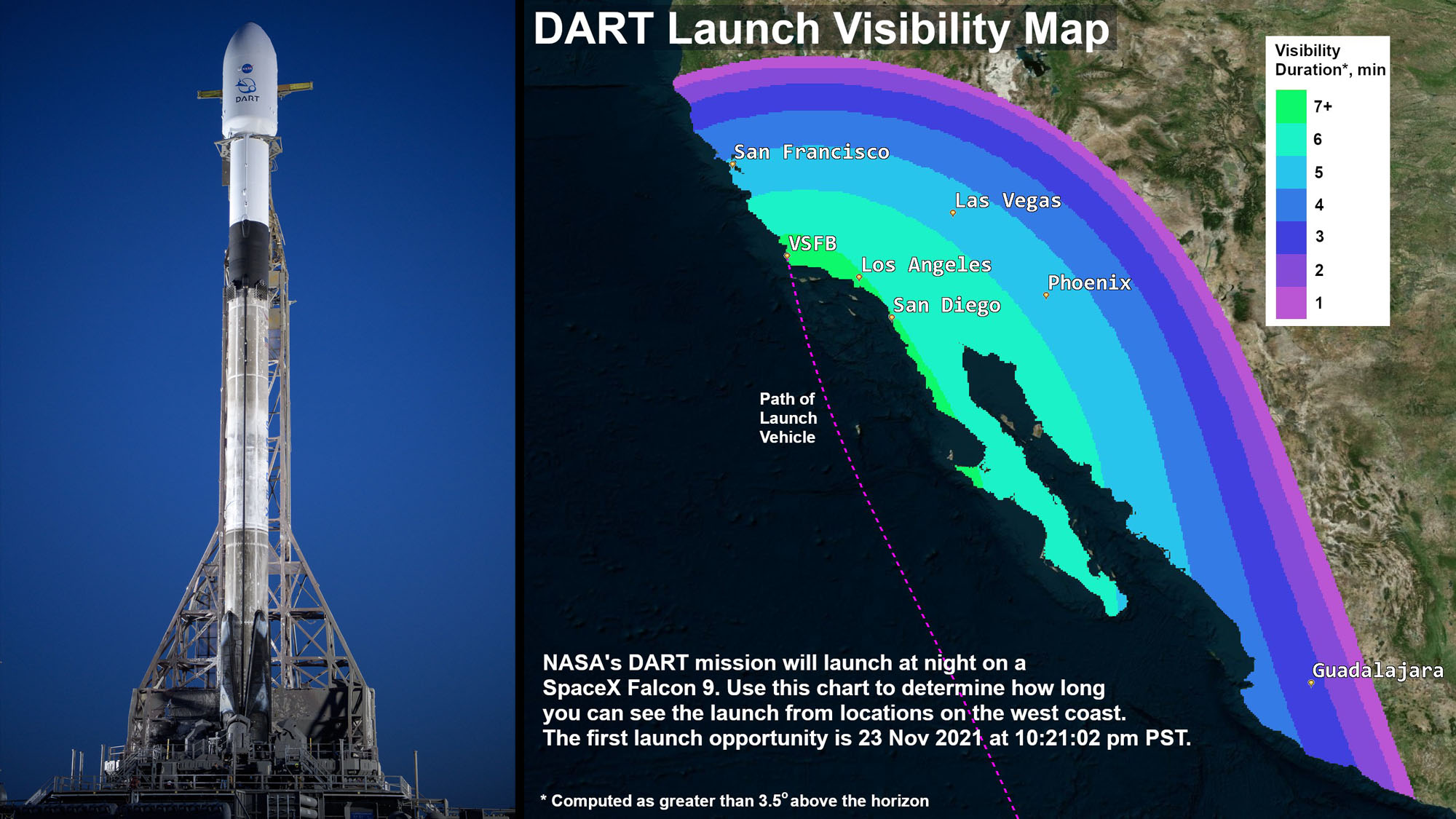Launch of NASA's DART asteroid mission may be visible from California and the Southwestern US
If you live in California or the southwest United States, you might be in for a launch show Tuesday night (Nov. 23) local time.
The Double Asteroid Redirection Test (DART) is scheduled to launch no earlier than 10:20 p.m. PST (1:20 a.m. EST, or 0620 GMT on Nov. 24), on a quest to slightly alter the path of an asteroid moonlet to test planetary defense technologies. (Happily, there are no impending asteroid threats, but NASA still wants the practice for future-proofing.)
Practically speaking, under dark and clear sky conditions, Californians and perhaps those as far south as Las Vegas may get to see the SpaceX Falcon 9 rocket rise from Vandenberg Space Force Base in California. If all goes according to plan, DART will rendezvous with its asteroid target in fall 2022.
"DART will launch on a southerly trajectory and, with clear weather, should be visible from the Southern California coast," NASA launch director Tim Dunn told Space.com
Related: NASA's DART asteroid-impact mission explained in pictures
"I'll ... give folks in the southwest USA and northwest Mexico a heads up that if our crack mission design lead's estimates are correct, the launch should be visible," Andy Rivkin, DART investigation co-lead at the Johns Hopkins Applied Physics Laboratory, wrote on Twitter Saturday (Nov. 20). "People as far as Vegas have seen launches in the past," Rivkin added. "I'll keep you posted."
Viewing conditions will be complicated by the coronavirus pandemic, which doesn't allow for easy gathering in groups due to social distancing. There may not be as many public viewing sites available, therefore, as when the NASA InSight mission launched from Vandenberg in 2018.
Breaking space news, the latest updates on rocket launches, skywatching events and more!
The rugged terrain of southern California also means that the coast tends to be prone to fog and cold, so make sure to dress warmly and to drive carefully if you happen to be commuting away from your residence.
If you can't catch the launch in person, there are still online options available through NASA and Space.com. The agency plans a live launch stream and will also have several social events happening for a virtual close-up view of launch preparations.
Follow Elizabeth Howell on Twitter @howellspace. Follow us on Twitter @Spacedotcom and on Facebook.

Elizabeth Howell (she/her), Ph.D., was a staff writer in the spaceflight channel between 2022 and 2024 specializing in Canadian space news. She was contributing writer for Space.com for 10 years from 2012 to 2024. Elizabeth's reporting includes multiple exclusives with the White House, leading world coverage about a lost-and-found space tomato on the International Space Station, witnessing five human spaceflight launches on two continents, flying parabolic, working inside a spacesuit, and participating in a simulated Mars mission. Her latest book, "Why Am I Taller?" (ECW Press, 2022) is co-written with astronaut Dave Williams.

